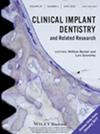Artificial Intelligence-Based Detection and Numbering of Dental Implants on Panoramic Radiographs
Abstract
Objectives
This study aimed to develop an artificial intelligence (AI)-based deep learning model for the detection and numbering of dental implants in panoramic radiographs. The novelty of this model lies in its ability to both detect and number implants, offering improvements in clinical decision support for dental implantology.
Materials and Methods
A retrospective dataset of 32 585 panoramic radiographs, collected from patients at Sivas Cumhuriyet University between 2014 and 2024, was utilized. Two deep-learning models were trained using the YOLOv8 algorithm. The first model classified the regions of the jaw to number the teeth and identify implant regions, while the second model performed implant segmentation. Performance metrics including precision, recall, and F1-score were used to evaluate the model's effectiveness.
Results
The implant segmentation model achieved a precision of 91.4%, recall of 90.5%, and an F1-score of 93.1%. For the implant-numbering task, precision ranged from 0.94 to 0.981, recall from 0.895 to 0.956, and F1-scores from 0.917 to 0.966 across various jaw regions. The analysis revealed that implants were most frequently located in the maxillary posterior region.
Conclusions
The AI model demonstrated high accuracy in detecting and numbering dental implants in panoramic radiographs. This technology offers the potential to reduce clinicians' workload and improve diagnostic accuracy in dental implantology. Further validation across more diverse datasets is recommended to enhance its clinical applicability.
Clinical Relevance
This AI model could revolutionize dental implant detection and classification, providing fast, objective analyses to support clinical decision-making in dental practices.


 求助内容:
求助内容: 应助结果提醒方式:
应助结果提醒方式:


